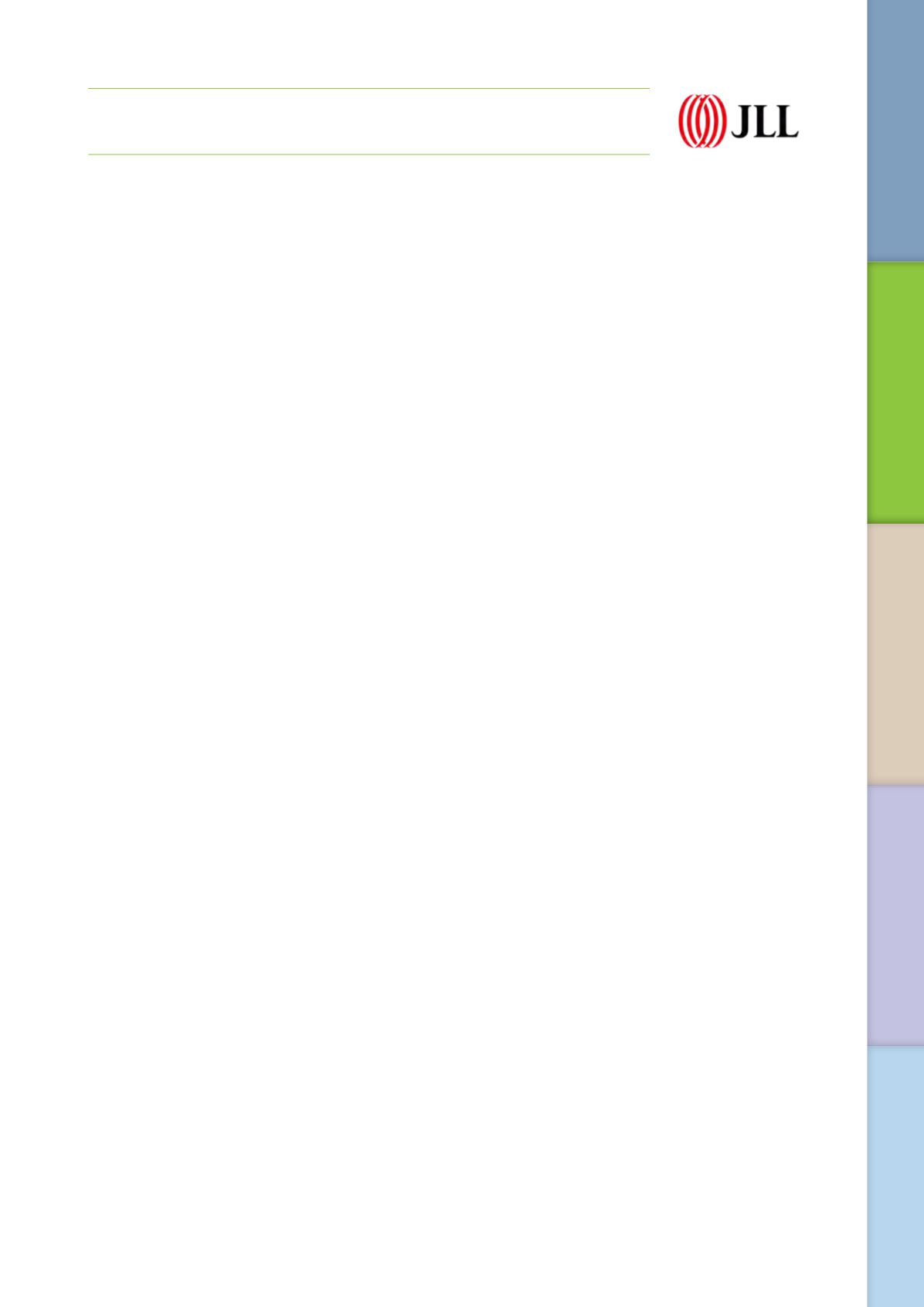

MALDIVES
HOTEL PROPERTY SECTOR
MARKET REVIEW
As of 1 March 2017
MALDIVES TOURISM MARKET
Between 2006 and 2016, visitor arrivals to the Maldives
grew at a Compounded Annual Growth Rate (CAGR) of
about 7.9% p.a. With the exceptions of the 2004 Indian
Ocean earthquake and tsunami and the global financial
crisis in 2008 and 2009, the total number of international
visitors to the Maldives has witnessed steady growth over
the past decade.
In 2016, the Ministry of Tourism launched the 'Visit
Maldives Year 2016' campaign, aiming to attract 1.5
million international visitors for the first time. As part
of the campaign, the government conducted various
national and international activities to strengthen
the Maldives’ brand and marketed the country as an
exclusive destination. However, the Ministry of Tourism
fell short of their target, recording approximately 1.3
million visitors for the full year. While Mainland Chinese
visitor arrivals have declined by 9.8% yoy in 2016, other
key source markets such as India, the UK and Italy have
displayed healthy yoy growth of 27.9%, 9.8% and 8.5%
respectively. Consequently, total international visitors
to the Maldives have increased by 4.2% as compared
to 2015.
HOTEL MARKET PERFORMANCE
According to STR Global, the trading environment in
the Maldives proved to be challenging in 2016, with
occupancy and average daily rates in all segments of
the market experiencing contraction. Occupancy in the
luxury market declined by 3.6 percentage points to 58.5%
while rates in the same segment decreased by 3.7%
yoy to US$1,369. Overall, RevPAR for the luxury market
decreased by 9.3% to US$800. In the upscale segment, a
larger yoy decline was recorded, with occupancy and rate
contracting by 1.7% and 10.0% respectively, resulting in
a RevPAR fall of 11.5%.
Despite the moderate growth in visitor arrivals, the
market faced strong headwinds due to a strengthening
US Dollar and an increase in rooms supply of resorts
and alternative accommodation options such as guest
houses. Based on 2016 statistics provided by the Ministry
of Tourism, occupancy rate for guest houses has increased
by 5.1 percentage points to 28.9% while overall resort
occupancy rate has decreased by 2.3 percentage points
to 74.0%.
EXISTING AND FUTURE SUPPLY
According to the Ministry of Tourism, Arts and Culture,
a total of 126 resorts with 26,933 beds were registered
in the Maldives as at December 2016 as compared to
115 resorts with 24,877 beds in December 2015. This
represents growth in the number of beds of approximately
8.3% yoy.
An estimated 3,000 rooms are expected to be added to
supply from 2017 to 2019. This will include new brands to
the Maldives such as the Grand Melia, Noku and Spanish
brand Riu Hotels which plans to open two hotels in 2018
– the 174-room Riu Palace and the 248-room Riu Classic.
Also set to open in 2018 is The Chedi Dhapparu, delayed
from its original planned opening in 2016, as well as the
first Pullman resort in the Maldives, a 120-room resort
in the southern Gaafu Alifu Atoll. In addition, IHG will
be managing their third resort in the Maldives – the 83-
room InterContinental Maldives Maamunagau Resort –
on behalf of Hotel Properties Limited, which is expected
to open in three to five years’ time. We are aware that
a number of lagoons in North and South Malé atoll are
undergoing reclamation works in 2017, and that will
inflate future hotel supply in the Maldives as well.
Several other projects, such as the 100-room Zitahli
Resort & Spa, the 100-room JW Marriott Maldives, the
110-room Centara Hudhufushi Resort & Spa, and the
114-room Mandarin Oriental that were planned for
earlier openings, now appear to be delayed indefinitely.
The opening of the Radisson Blu Maldives Hulhumale has
also been pushed back to 2018 or 2019 from its original
opening date of mid-2015.
HOTEL MARKET OUTLOOK
Uncertainties stemming from global developments such
as Brexit and the Trump Presidency suggest challenges to
the Maldives’ tourism industry in the short term. Several
key source market currencies have depreciated relative
to the US Dollar, including the Euro, Sterling Pound,
Chinese Renminbi and KoreanWon in the past six months,
which may impact arrivals from these markets. Political
tensions and resulting sanctions on Russia, coupled with
the persistent weakness of the Ruble (approximately 42%
lower than the peak in 2014) have had a lasting impact on
arrivals from Russia, a key source market particularly in the
luxury segment. After displaying significant growth from
2009 to 2014, Mainland Chinese visitation has recorded
declines over the past two years. Visitor arrivals from
the UK, which have been a bright spot in 2016, have an
uncertain outlook in the short to medium term given the
Brexit vote in June 2016 which has significantly impacted
the Sterling Pound against the US Dollar.
Looking forward, the operating market and global
economy, coupled with the potential supply influx, are
likely to limit Maldives’ resort trading performance in the
short term. In addition, the string of high-stakes elections
in France, Germany and Netherlands could bring about
greater political and economic uncertainties for the
European Union, thus potentially impacting European
visitor arrivals. However, we expect that increased
marketing campaigns, continued investment in tourism
infrastructure and growing airlift from new source markets
will improve the medium to long-term prospects of the
Maldives.
33
Annual Report 2016
MARKET REVIEW


















